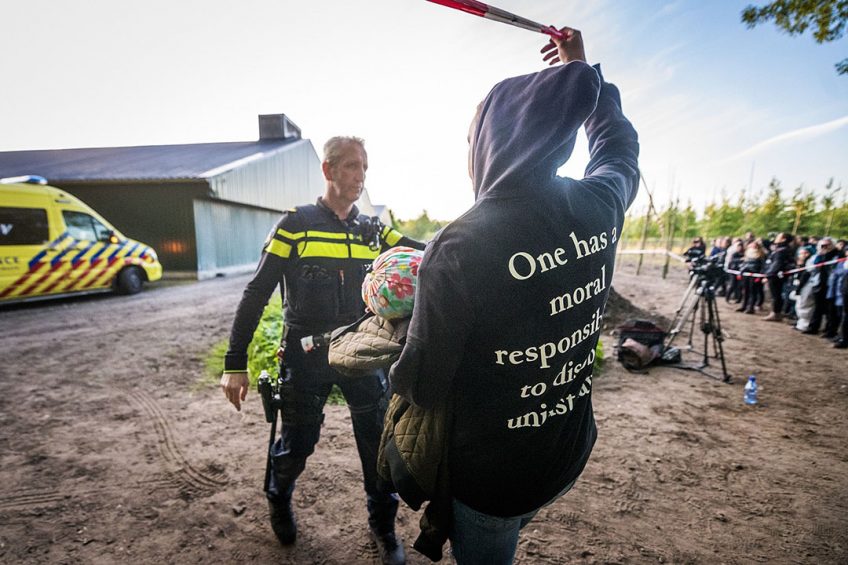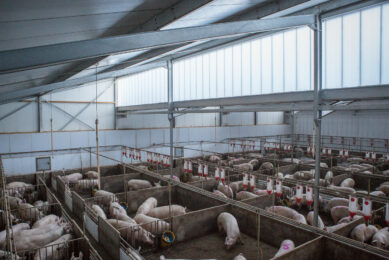Pig production will become more transparent

Over 100 animal activists recently trespassed onto a Dutch pig farm and occupied the place for over 10 hours. Reactions – from social media to Parliament – were mostly uniform: full of dismay and condemnation about this illegal action. Now what’s next? Sit back and pretend nothing ever happened might not be the best idea, writes Pig Progress editor Vincent ter Beek.
A good few years ago, a national daily here in the Netherlands presented a nice article in which a pig farmer was interviewed about his new sow house. Complying with the latest gestation crate-free legislation in the EU, the owner had a story to tell. The picture was great, taken from above, showing a modern, wide, spacious room with free access stalls.
A few days later – the same paper published a letter to the editor. A reader had been completely appalled by what she saw. All those poor sows in iron crates – she couldn’t stand it no longer and her family had decided to turn vegetarian for good.
Intrigued by all this, I looked again and asked around. As it turned out, the photographer had made his picture at the moment that the sows were being fed, hence all the pig house inhabitants had entered a free access stall to get access for a meal.
Pig production being misunderstood
I’m sure there are plenty of examples like these all over the Web. Typical reactions we all can find include phrases like ‘the gap between countryside and cities is growing’ or ‘we need to educate and inform the consumers better’.
Now I am very aware of that gap – I happen to be the guy standing on the suspension bridge connecting both sides.
Welfarist action: Occupying a pig farm
Back to last week: the same gap became unmistakably visible at a swine farm in the south of the Netherlands. Over 200 animal welfarists had entered the premises of a commercial pig farm and over a 100 of them even entered the pig houses. Their goal: occupation of the pig houses, to ask attention for what they feel is ‘abuse of animals’. It took the authorities for almost 12 hours, before the farm was ‘liberated’ by the police. Many local farmers had appeared on the scene as well, showing obvious support for the pig farmer.
A break in and occupation is a relatively new phenomenon used by animal activists to draw attention for their cause. A first analysis, however, shows that the entire initiative mostly backfired on the welfarists. Perhaps it wasn’t the smartest of moves.
On social media, there was strong support for the farmer. After all, it is illegal to break into someone’s property, the pig producer and his family must have felt uneasy in his own home to say the least and last but not least – the break- in led to stress amongst the animals they wanted to ‘save’ and it created a serious biosecurity risk. The issue even led to questions in Parliament. Many now call for urgent action against ‘animal welfare terrorism’.

Read more about the animal welfarist action last week
Animal welfarism is far from over
Nevertheless – I’d like to make a prediction. Animal welfare activism is not going to vanish overnight. It is going to continue to exist and I’m afraid that what we saw will only grow. That is why these questions are relevant: why does this all happen? And why does it happen now?
The last question is relatively easy to answer. I’m convinced that it is related to the growing importance of social media. The entire world has become more democratic in the sense that anybody can share and/or receive updates from no matter where on the planet. If you want to share your message for a better world, you just go out and do it.
Thankfully, the pig industry increasingly realises that and it is great to see more and more pig farmers now also on Twitter, Instagram – you name it. That is not only nice to do – it is essential, because it’s there that the existence of the pig business needs to be won and to be safeguarded. Plus: it’s better to be proactively communicating than to do so reactively.
Why does animal welfarism happen?
So now the other question: why does it happen? I think that relates to the example I gave in the introduction paragraphs. Sometimes people see the same yet they perceive something different. That leads to discomfort for some. Now is that all a matter of educating and informing?
Certainly, but that is not the whole story.
For example: I showed a picture of conventional farrowing crates to a friend and soon the question came whether the mother pig can actually turn around. I explained how the system works. I pointed to the piglets’ lives. I touched on efficient management. And why the lives of the pigs are essential. But despite all logic and reasoning I had to confirm that indeed the sow cannot turn around for a month.

Another example: what is the sensation of many members of the public when they come close to a pig farm? What is the basic memory they take home? We can be short about that: it is the strong smell. Again, I can explain whatever I want, but explaining won’t make the smell go away.
Pig farms being perceived differently
These are probably some of the most obvious examples, but I can make a long list of things that are perceived differently by the outside world. So on one hand, the modern times demand increased transparency and openness. Yet on the other, when opening up, there are day-to-day practices that can be perfectly explained, but whether or not that leads to acceptance is a different story.
Increased transparency leads to something else – something far-reaching for the swine business. As much as we would like the world out there to perceive and appreciate swine production the way all professionals see it, it is also vital to do so the other way round: to understand how outsiders might perceive what they see.
As such, I wouldn’t be surprised that if in the coming decades, this tendency of more transparency will eventually and bit by bit lead to e.g. a further reduction of ‘iron’ in the pig houses and more sophisticated ways of dealing with pig manure.
So this is my view from the middle of that suspension bridge, trying to make sense of it all…














